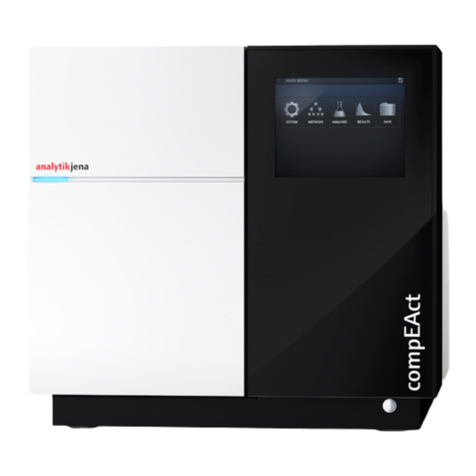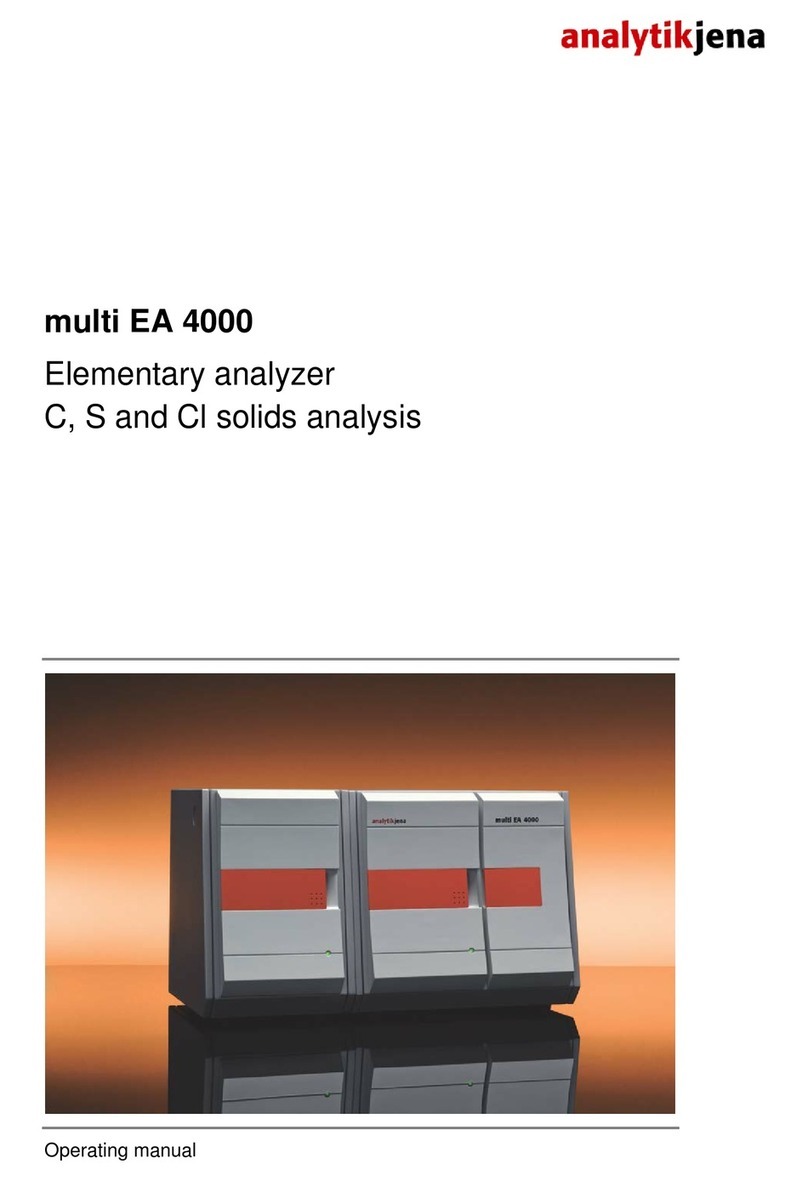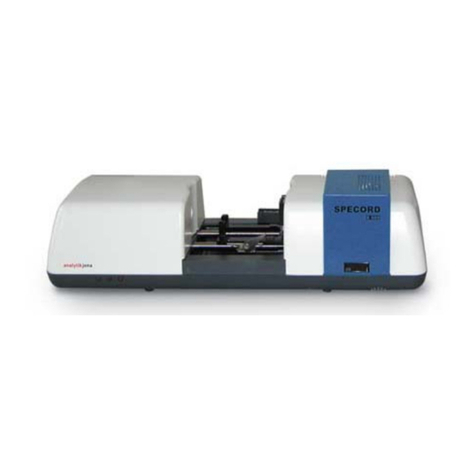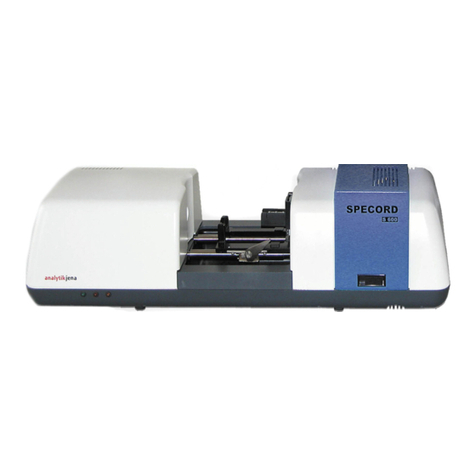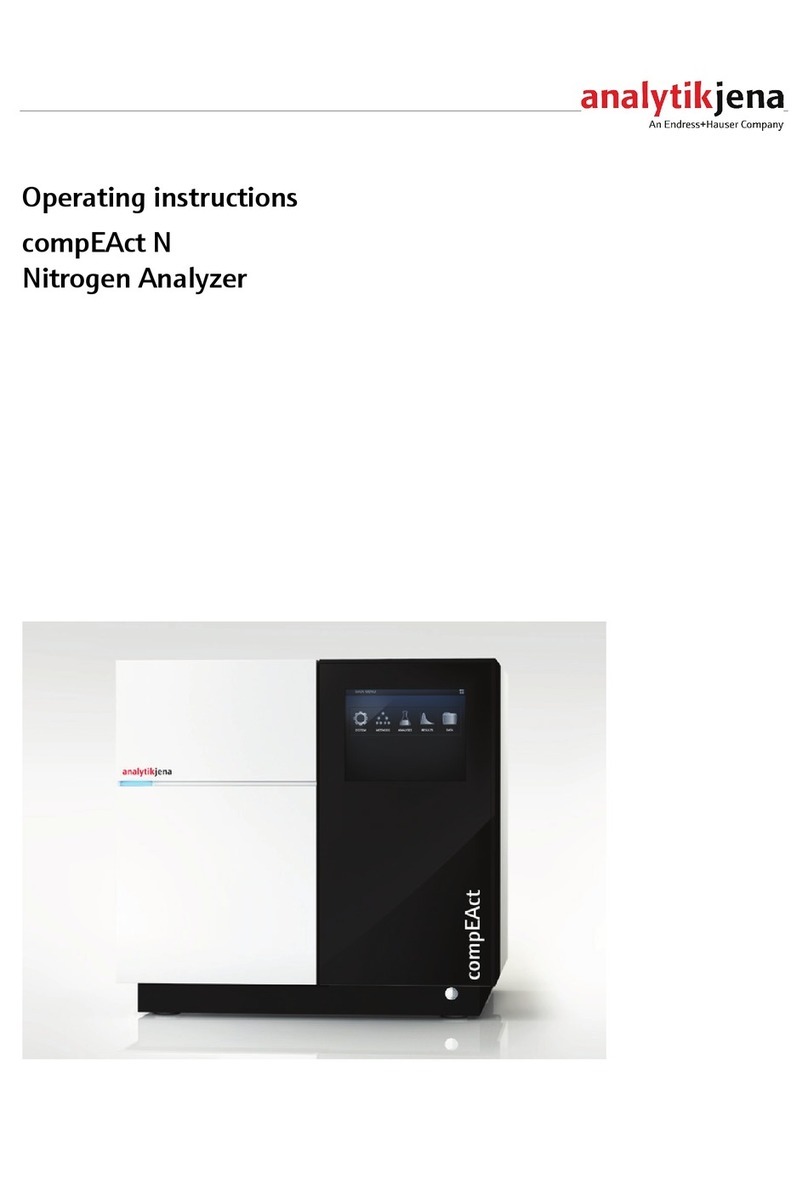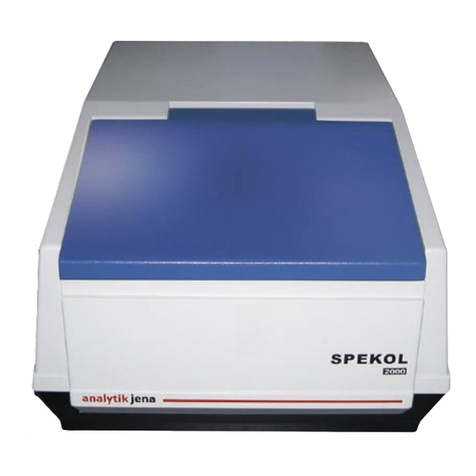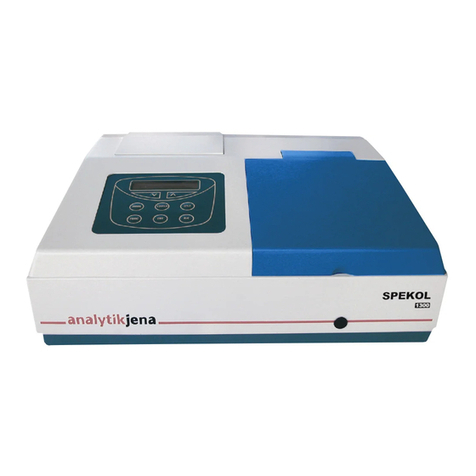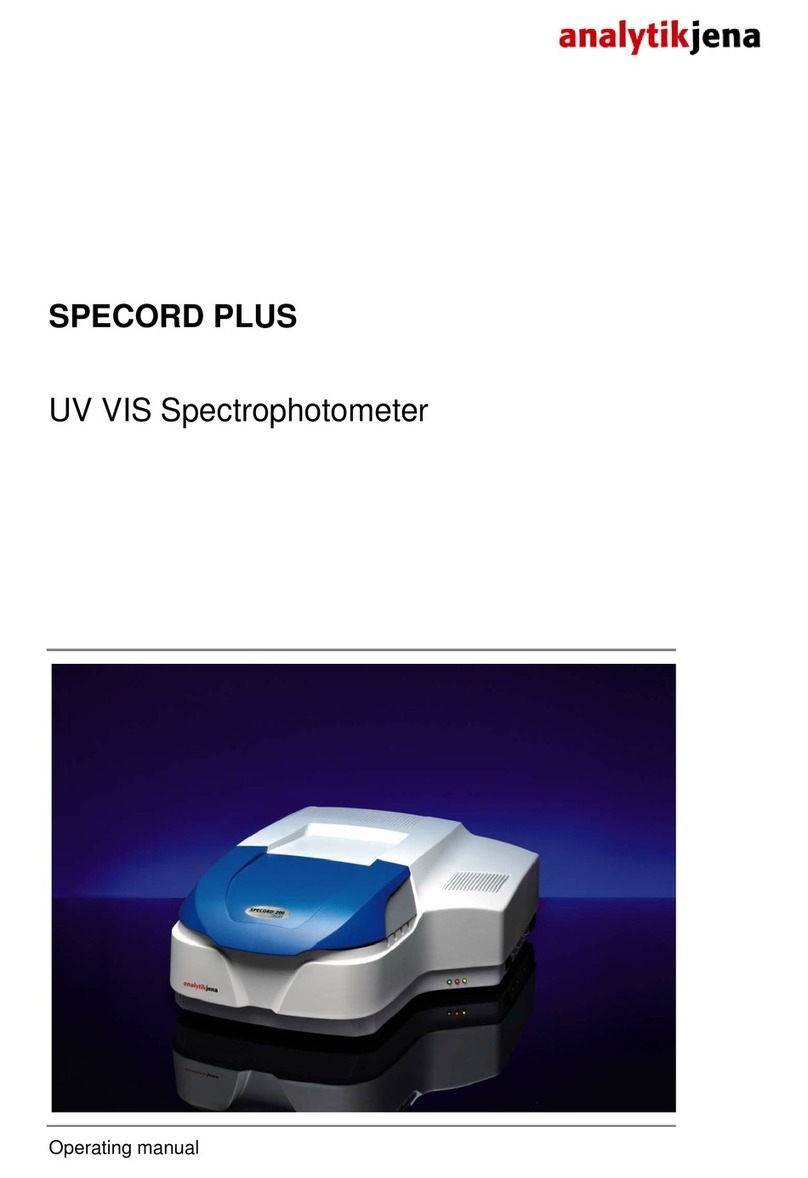
SPECORD®Contents
SPECORD® 200/205/210 User's Manual – Edition 03/2003 Page 1
Analytik Jena AG
Contents
1Introduction 3
1.1 Conventions............................................................................................................. 3
1.2 Intended use of the SPECORD®.............................................................................. 4
2Safety notes 5
3Disposal 9
4Technical data of the spectrophotometers 11
4.1 Optical data of SPECORD®.................................................................................... 11
4.2 General technical data of SPECORD®................................................................... 12
5Device description and operating principle 13
5.1 Mechanical design of SPECORD®......................................................................... 13
5.2 Design of subassemblies ....................................................................................... 15
5.2.1 Light sources ......................................................................................................... 15
5.2.2 Spectrometer system and photometer section ....................................................... 16
5.2.3 Sample compartment............................................................................................. 17
6Installation requirements 21
7Installation and start-up 23
7.1 Connectors and display elements .......................................................................... 23
7.2 Removing the transport lock................................................................................... 25
7.3 Connecting the SPECORD®................................................................................... 26
7.4 Start-up.................................................................................................................. 28
7.5 Switching the device off ......................................................................................... 30
7.5.1 Switching the deuterium lamp off ........................................................................... 30
7.5.2 Switching the SPECORD®off ................................................................................ 30
8Accessories 31
8.1 Standard cell holders ............................................................................................. 31
8.2 Receptacle for cells with turbid samples................................................................. 32
8.3 Additional accessories ........................................................................................... 33
9Care, maintenance, lamp change 35
9.1 Care and maintenance........................................................................................... 35
9.2 Cleaning................................................................................................................. 35
9.3 Changing lamps..................................................................................................... 36
9.3.1 Note on the service life of lamps ............................................................................ 36
9.3.2 Opening the flap of the lamp compartment............................................................. 36
9.3.3 Changing the deuterium lamp ................................................................................ 38
9.3.4 Changing the halogen lamp ................................................................................... 41

